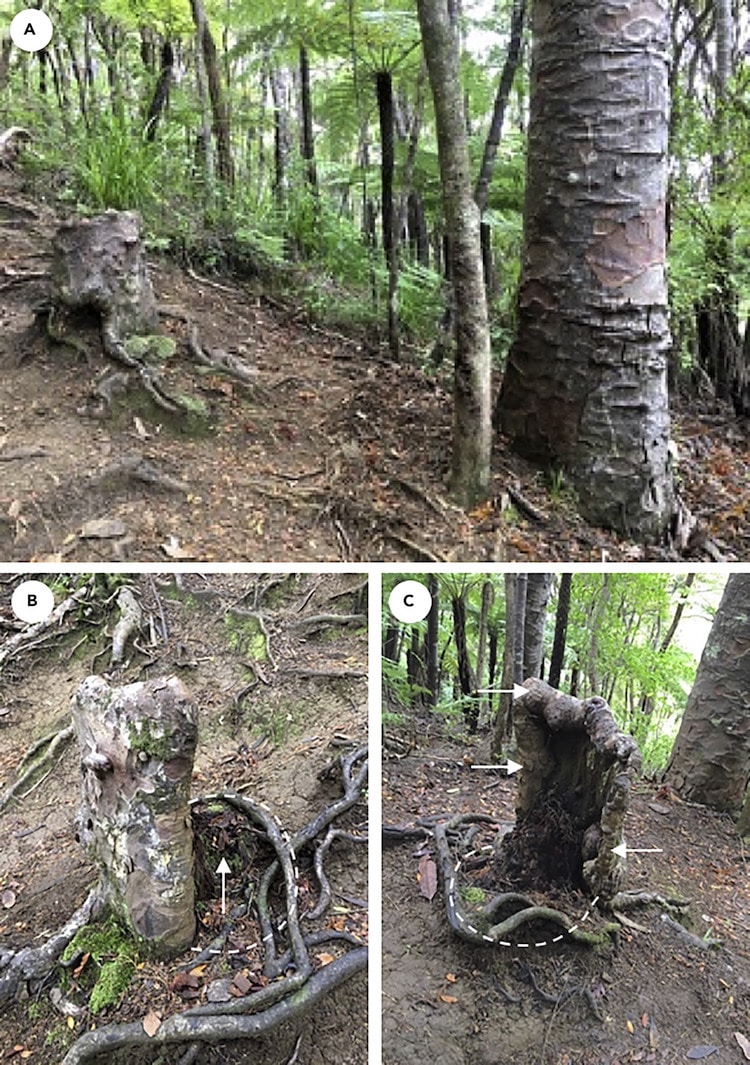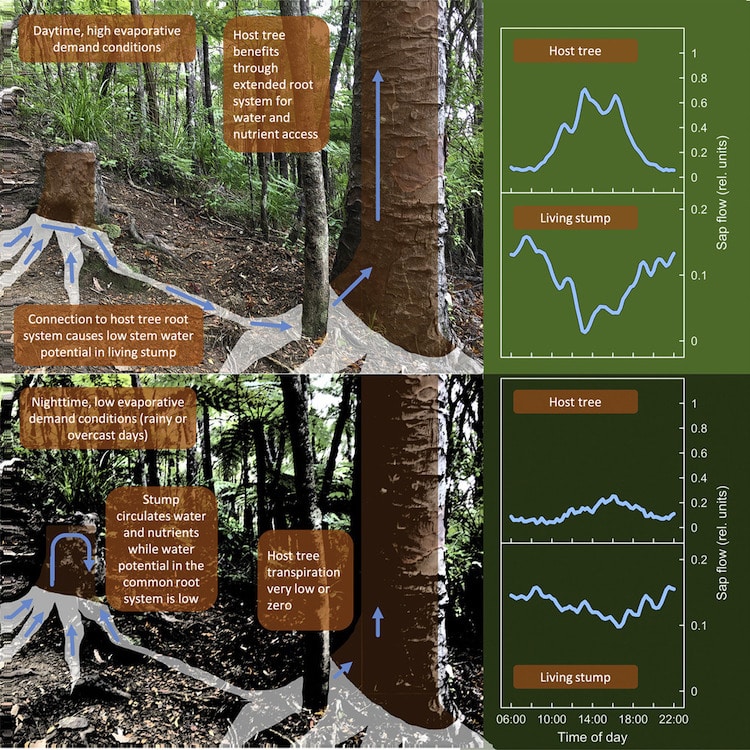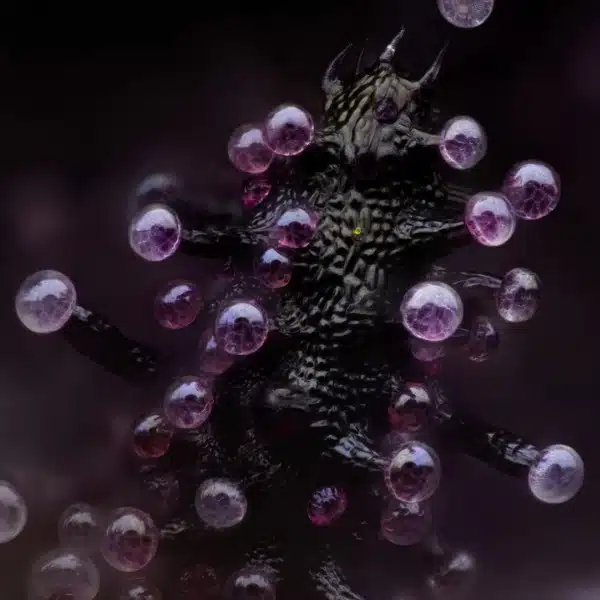
Stock Photos from Ervin-Edward/Shutterstock
This post may contain affiliate links. If you make a purchase, My Modern Met may earn an affiliate commission. Please read our disclosure for more info.
When you're walking through the forest and see a tree stump, you might think you're looking at a dead organism. But researchers have reason to believe there's more to tree stumps than meets the eye. In fact, thanks to the help of other trees in the forest, they may still be alive. Researchers in New Zealand have recently published a study on the phenomenon, which they call hydraulic coupling.
By placing monitors on a tree stump with living tissue growing from it, as well as surrounding trees, they noticed something interesting. Trees typically need their green foliage to stay alive and grow, but not in this case. Researchers found that the living stump had an extended root system that tapped into the roots of a host tree. By taking advantage of the larger root system, the stump was able to access water and nutrients, keeping it alive.
It's an incredible phenomenon that speaks to the connectivity of trees and their ability to help “community members” in need. This type of resource sharing is among many fascinating details also shared in Peter Wohlleben's bestselling book The Hidden Life of Trees: What They Feel, How They Communicate. In the book, Wohlleben makes a case for trees to be viewed as human families, with forests looked at as social networks. When viewed in this way, it doesn't seem strange at all that a host tree would freely extend its resources to keep a stump alive.

Frontal view of the tree trunk remnant from the forest track (A). Oblique lateral view showing the typical gray-brown kauri bark with distinctive hammer mark pattern and decaying wood behind it (arrow) indicating the original trunk perimeter (dashed line) (B). Rear view showing a thick callus lining along the edge (arrows). The dashed line indicates the approximate original trunk perimeter (C). (Photo: M.K.-F. Bader and S. Leuzinger)
The New Zealand study also found that the host tree didn't just give freely to its own detriment. During the day, when the host tree was evaporating water through its leaves, the resources doled out to the stump were quite low. However, once night came and evaporation slowed, the stump was able to circulate water and nutrients from the host. The same was true during rainy and overcast days when the host tree had little or no evaporation.
So the next time you're ambling through the forest, look around and consider that the organisms surrounding you are much more complex than you may think. Just as we pull together to help our community in times of need, so do trees.
Researchers have discovered that living trees can connect to stumps in order to help share resources and keep them alive.

Photo: M.K.-F. Bader and S. Leuzinger
h/t: [NewScientist]
Related Articles:
Trees with “Crown Shyness” Mysteriously Avoid Touching Each Other
Poland’s Mysterious “Crooked Forest” Populated with 400 Bent Pine Trees
Couple Spends 20 Years Planting an Entire Forest and Animals Have Returned
700-Year-Old Dying Banyan Tree Is Being Revived With an IV Drip






















































































